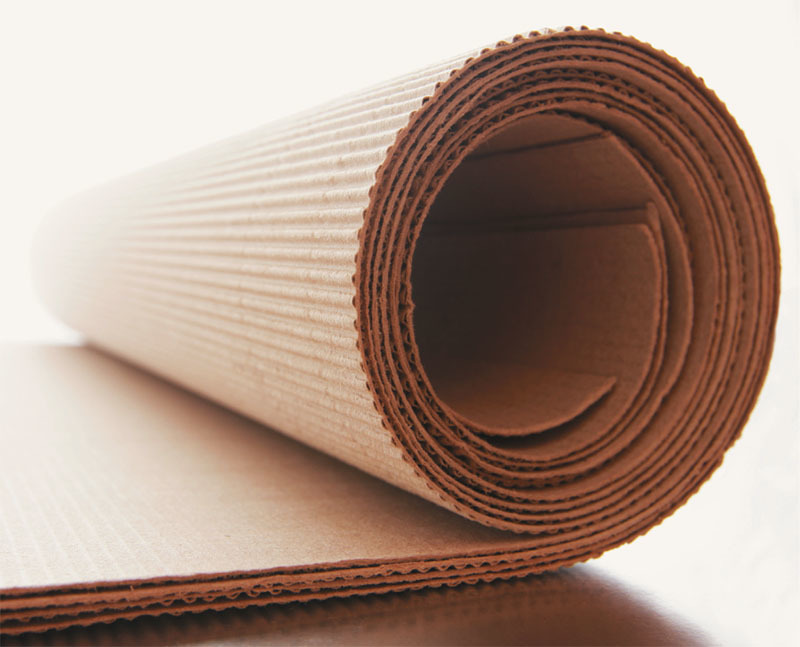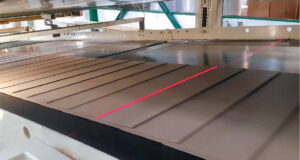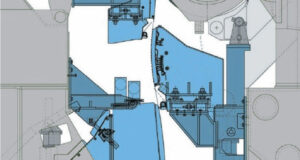
In this article, I would like to carefully review machine settings that directly affect the board caliper of the boxes that we manufacture and the many different types of displays we ship to our customers. As a large manufacturing group, the corrugated industry is challenged every day, as the product that we process is not only changing from order to order, but within orders themselves as we are producing them.
We should all consider products we manufacture that require balanced liners, unbalanced liners, coated stock, and pre-print liners. These variations each offer their own individual set of requirements and specific machine settings. In our industry, we often have incorrect nip settings in many of our flexos and rotary die cutters, as our operators are generally not properly informed about the caliper of the sheets they are processing for the order. The result is that we have unintentionally reduced the board caliper during the converting process due to incorrect nip settings. In many cases, our design and quality people will then see reduced ECT numbers. Their response is to increase the paper grade to assure adequate product performance.
VARIETY AND SUBTLE CHANGES
In previous articles, I have defined a number of calibration practices we require in order to properly manage and control accurate nip settings in our presses. I’ve also discussed ideas that will help improve performances in tooling and machine settings resulting in customer satisfaction. All these areas of expertise are necessary ingredients that contribute to financial success and stability in our box plants as well as our customers’ operations.
So many different types of board combinations are surfacing every month and we can’t sit back and ignore them. We as box suppliers should be aware that there are also subtle changes that are slowly developing in our industry. These changes are developing under the radar, and we must stay ahead of the curve.
We also live and work in a unique industry where our plants have an interesting equipment inventory of old-design machines; newer flexos and die cutters; and brand new, high speed, computer controlled, multi-colored flexos and die cutters. We share common orders between plants and we also do a great job of “drop shipping” orders to locations closer to our customer’s facilities. These orders are also made on different machine centers every time they are shipped, depending on the schedule for that day. Caliper maintenance should be consistent and must be reviewed for every order.
The first area that we should investigate is the design department. I believe that in many cases our boxes are “over-designed.” Salespeople generally obtain orders the following way: visit a potential customer and obtain box samples; bring samples back to the plant for review; copy the box design using existing paper combinations and box dimensions. If the price is competitive and the delivery environment is correct, we can then take an order from a competitor.
The actual application and performance of the potential order is sometimes skipped or not known. The paper grade of the liners and mediums can be excessive and not necessary, because, historically, converting crews have crushed the sheet too much in feed sections and print stations well past the 0.003″ (0.08 mm) caliper loss standards. Over the years, heavier liners have been used to sustain this process (excessive caliper loss) in order to supply a shipping container that will satisfy the customer’s requirement.
In designs or new products for existing customers, the process should be different. Product samples such as plastic bottles, folding carton samples, or actual weighted products are supplied. Our design teams then have a real chance to shine with appropriate structure suggestions, inserts, and product protection ideas such as partitions or foam support. We then offer RSCs, wrap-around designs, and/or die cut designs. These ideas are based on historical data and known manufacturing characteristics that are used in the plant — flute designs, flute profiles from the corrugator rolls, paper combinations, and recent success stories.
To stay current, I suggest that this historical data in the plant should be regularly updated and reviewed by the design group. Manufacturing also needs to be a part of this. You must be sure that the box you are supplying is the one your customer needs, not one that is over-designed (or under-designed). If you are a sheet plant and you buy your sheets from different suppliers, I encourage you to have design review meetings with your sheet feeders just to be sure that you understand what you are getting.
As the plant makes improvements on the corrugators and new papers are introduced to the process, the paper changes should be passed along to the design department. Any new mechanical characteristics of the paper, temperatures of the corrugator rolls (because of improvements to the steam systems), or new types of showers (moisture content) for the medium make a difference to the caliper of the sheet. They will also dictate the mechanical settings in your presses because of these changes or improvements. We also know that sheet caliper controls the compression strength numbers of the many flute combinations manufactured today. This information will then enable the design department to offer a better, more accurate, “cost effective” designed product that will satisfy the customer’s requirements. By doing this, the plant will have a better opportunity to offer and manufacture the correct product and manage cost at the same time.
RECORDING SHEET CALIPER
Methods of recording sheet caliper from the corrugator can vary across the board; in some cases, they don’t exist. I would encourage every corrugator crew or group to develop a plan to standardize methods on reporting sheet caliper from the dry end.
Keep in mind that paper changes on the wet end are a moving target. Different mills supply liners and mediums that are specific to their own mill. Again, if you are a sheet plant, the caliper is going to be different all the time and these numbers need to be managed and understood by the converting crews.
Remember: caliper loss in flexo and die cutters should be no more that 0.003″ (0.08 mm) in the non-printed area in the converting process. If there is a 0.005″(0.125 mm) variation in the sheet itself from the corrugator, the flexo and die cutter crews need to be aware of this so that they can make and manage the proper settings.
Corrugator crews should report an accurate number that represents the caliper of the sheets within that order. They need to be sensitive to the fact that their customer — the finishing department — will be checking their numbers for accuracy and consistency. The finishing department should also support its own customers. The final customer (the end user) is the one who pays the bills and completes the final inspection process.
Controlled caliper allows the press to print better and offer consistency in color and registration. If the printing and color are correct, the customer will be more willing to accept the order without further inspection. If the color is off and the shades are not correct due to caliper variation, there is a good possibility that the order will be over-inspected and possibly returned.
We know there are tolerances and that variations are a part of our business, so the caliper numbers should be properly and accurately controlled. This industry is getting tougher and tougher all the time and we need to have current, more accurate information throughout the process. Orders are lost on a “half penny” per box selling price and we need to continue to be better managers of our process.
Manufacturing cost is also a critical part of this market. Cost is based on historical data; it is the only basis that accounting can use for its cost analysis. Therefore, our manufacturing process should be reviewed by accounting on a scheduled basis. If our speeds are improved based on machine settings, better product knowledge, and understanding (including caliper control), we can reduce cost. From experience, orders have been both lost and secured based on better, more accurate accounting practices. In today’s market, “current and accurate” is a great tool for success and increased profits.
One other positive area to think about is communicating with the sales group and, ultimately, with the customer. If the process described here is active and part of the company culture, salespeople will be more able to discuss positive manufacturing and design controls with customers. Many customers never think about process control — they just want boxes that work. There is, however, a group of large, vertically-integrated companies in North and South America and Europe that thrive on process control. They demand it from all suppliers. Box manufacturers need to be strong in this area so that these customers have a high level of confidence.
Let’s be proud of what we do, both internally and in the marketplace. Don’t be afraid to brag to customers about your strength in process control and accurate machine operations. Enjoy your job!
 Paper 360
Paper 360

